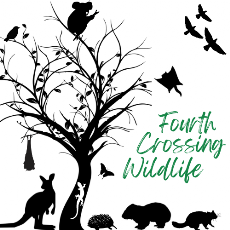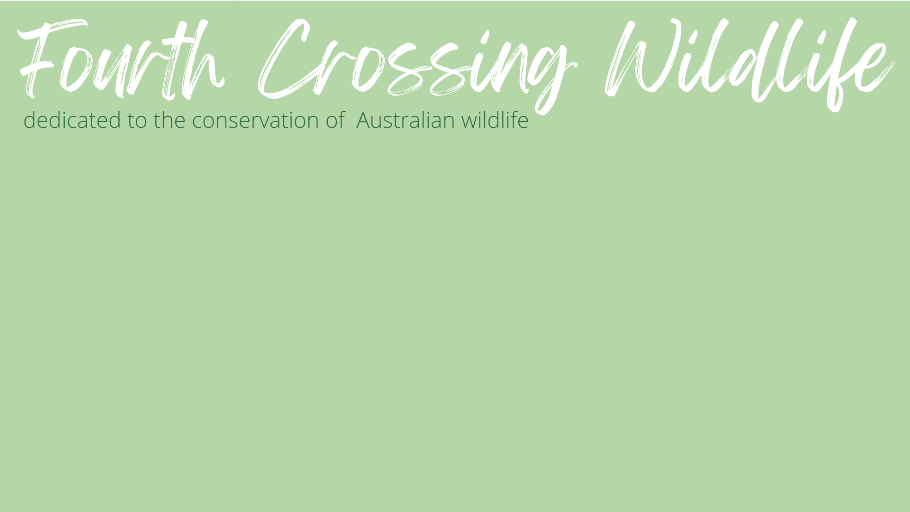Wildlife Resources
How to Know When a Koala Needs Help
by Becky Harrington
Koala Hospital Port Macquarie
Article courtesy of Gum Tips magazine, published by the Port Macquarie Koala Hospital.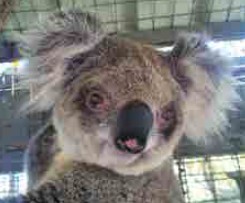 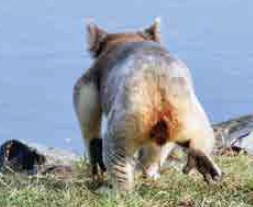 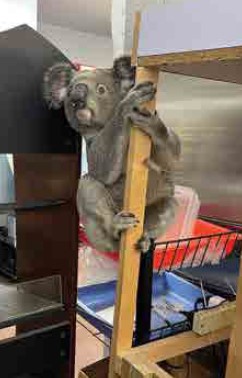  | What you do may be critical to saving a koala’s life. We are lucky that despite declining numbers, there are parts of Australia where it is still possible to see wild koalas. However, the fact is that many of these koalas live too close for comfort to people. Land clearing and the development of housing and infrastructure has fragmented and degraded their habitat. Reduction of their range means that many koala populations are vulnerable to disease and are in danger from motor vehicles and dogs. The most common reasons for a koala to be rescued are the disease chlamydia, motor vehicle accidents and dog attacks. In addition, healthy koalas are sometimes found in unsafe locations and may need to be rescued and checked, then released back to safe habitat. First Quesion : Is the koala in trouble? Ask yourself, is the koala displaying any signs that it needs human help (see below)? If the koala appears healthy and is in a safe location, leave the koala alone. People often think human contact and interaction does not cause stress to wild koalas. This is incorrect, and stress on its own can actually create health problems! Note that koalas often rest in trees which are not food trees, therefore seeing a koala in a palm tree or a Norfolk pine for example, is not generally a cause for concern. Second Question : Is the koala displaying any signs that it needs human help? Chlamydia Check for: • Large areas of brown stain around the koala’s rump • Diseased eyes - characterised by red, inflamed or overgrown tissue around the eyes, yellow discharge, or eyes crusted shut All koalas displaying any symptoms of chlamydia need to be rescued and treated for the disease. Chlamydia is deadly for koalas if left untreated, and causes terrible pain. It is also important in the fight to reduce the spread of chlamydia in wild populations. Motor Vehicle Accident An injured koala may: • Have obvious bleeding or fractures • Grind its teeth (a sign of pain) • Have a fractured jaw – observe whether the upper and lower jaws align • Walk in circles (indicating head trauma, blindness) All motor accident victims should be rescued. Injuries are often life threatening. Dog Attack An injured koala may: • Have puncture wounds • Have obvious bleeding, dried blood, matted wet fur • Grind its teeth in pain All victims of dog attacks need to be rescued. A victim may look like they only have minor injuries but internally they can have serious pressure injuries from the dog’s teeth and massive damage to their internal organs. Unsafe Locations, Unusual Behaviour • Koala sitting by the side of a road • Koala sitting low in a tree If you see a koala sitting by the side of a road, but have not witnessed an accident, it is still quite possible the koala has been hit by a car or is sick in some other way. A healthy, wild koala is very unlikely to sit by the side of a road. Similarly koalas which are observed sitting low in the same tree or shrub for longer than 24 hours should be rescued and checked for injury or disease. • Koala trapped in backyards with a dog present • Koala in unusual location (inside a building for example) In these circumstances, koalas should be rescued, and can often be released quickly if they are not sick or injured. We release them into habitat close to the rescue point, otherwise koalas will take more risks crossing roads and backyards to get back to their home range. Report Sightings of Healthy Koalas In the Mid North Coast of NSW, please let the Port Macquarie Koal Hospital know when and where you see koalas which appear healthy and are not in trouble. This is now quick and easy to do online. To report a sighting, please fill in the online form on the Koala Hospital website - www.koalahospital.org.au/form/sighting/ The hospital enters all sightings into an important database, which increases understanding of our local koala populations. If you live outside the NSW Mid North Coast, check with your local wildlife organisation as they may also be grateful for information about koala sightings. How to Get Help if a Koala is in Trouble If you are in the Mid North Coast of NSW, telephone the Port Macquarie Koala Hospital on 02 6584 1522 straightaway. The Koala Hospital rescues koalas from Nambucca Heads in the north, to Johns River in the south, and inland west to Walcha. Unless it’s absolutely impossible for you, please stay at the scene until rescuers arrive, and follow any advice you are given. This can make a big difference to the success of the rescue and the chances of the koala surviving If you live in a different area or are travelling, find the contact details of the local wildlife organisation and report the sick or injured animal immediately. Every state and region in Australia has wildlife rescue organisations. |
